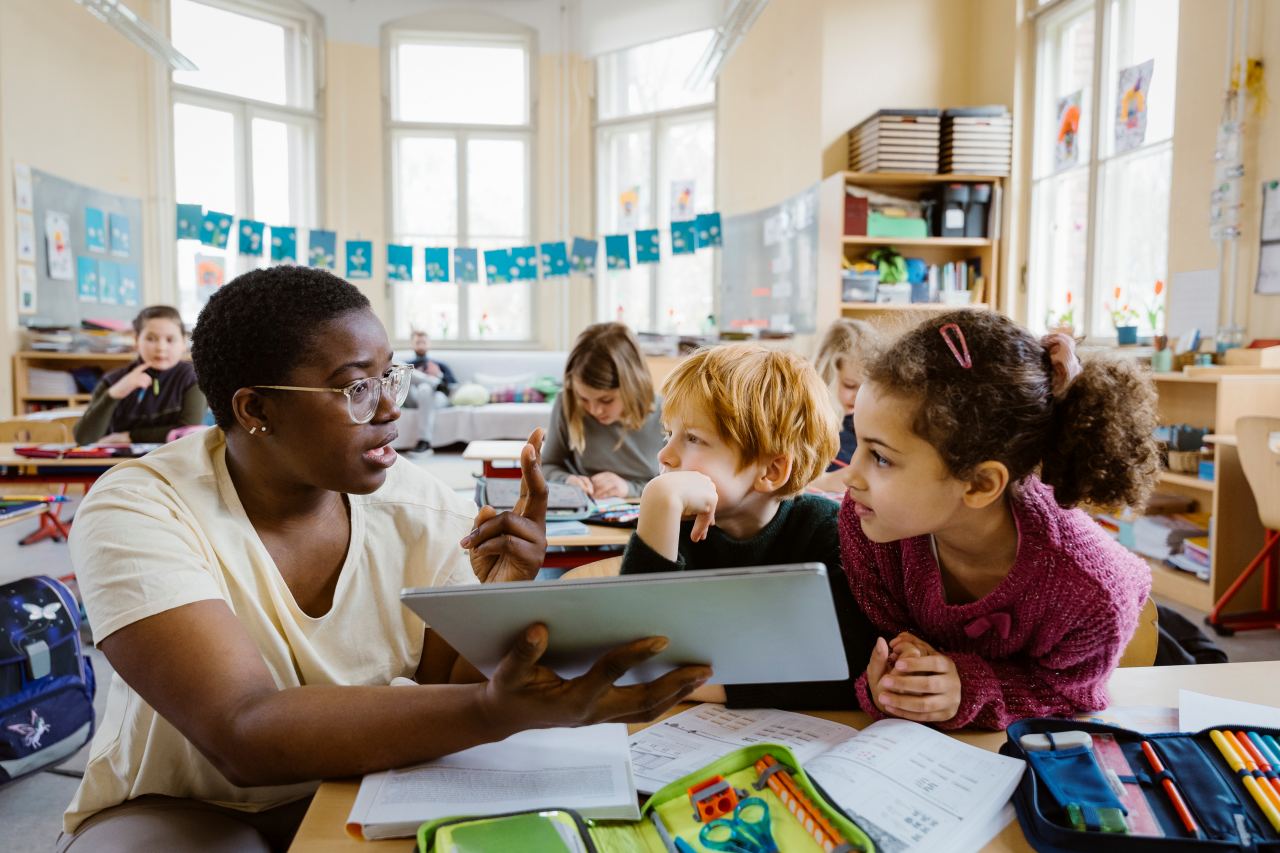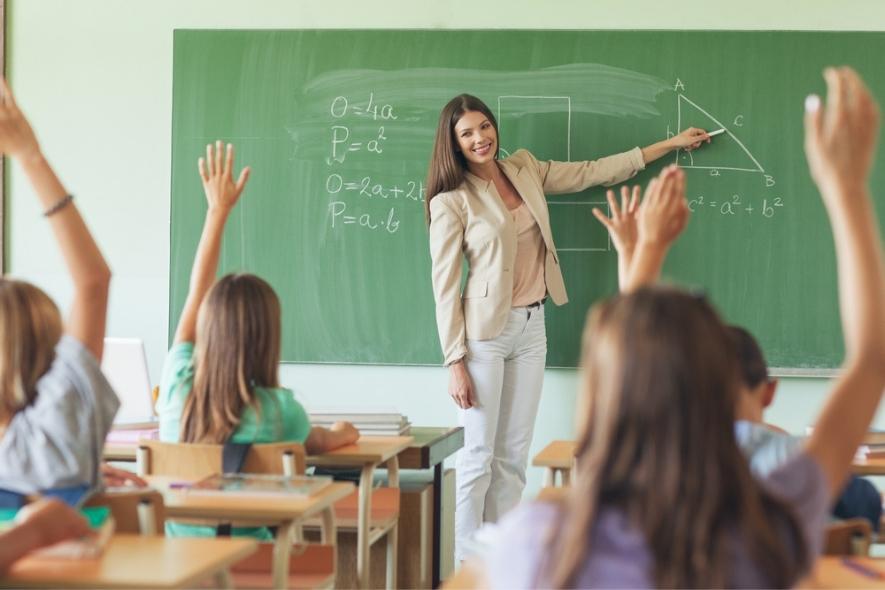Top Primary Science Tuition Singapore to Help Your Child Excel
Wiki Article
A Comprehensive Guide to the Numerous Learning Methods in Main Science Guideline
The exploration of diverse knowing approaches in main scientific research direction presents a chance for teachers to enhance student involvement and understanding significantly. By checking out hands-on understanding techniques, inquiry-based strategies, and collaborative techniques, we can recognize efficient techniques that satisfy numerous learning styles. Additionally, the combination of innovation and set apart guideline plays a vital function in promoting a comprehensive atmosphere. Nonetheless, the inquiry continues to be: exactly how can these approaches be efficiently applied in the classroom to optimize their influence? The answer lies in a more detailed evaluation of each strategy and its effects for mentor scientific research.
Hands-On Knowing Techniques
Hands-on discovering methods play a critical duty in key science direction, involving pupils in energetic exploration and trial and error. These techniques permit learners to engage straight with products and sensations, fostering a much deeper understanding of scientific ideas. By using manipulatives, models, and real-life experiments, teachers create a setting where trainees can observe, assume, and evaluate their ideas.Such techniques not only enhance understanding yet additionally grow essential thinking and analytic skills. When pupils take part in tasks like constructing basic equipments, growing seeds, or carrying out chain reactions, they are encouraged to ask questions and look for answers through their own monitorings. This experiential strategy helps to demystify intricate scientific concepts, making them much more easily accessible and relatable.
Additionally, hands-on knowing advertises partnership amongst peers, as trainees usually operate in groups to perform experiments or share findings. This synergy not only enhances their discovering experience yet additionally establishes necessary social skills. Ultimately, incorporating hands-on methods in primary scientific research direction cultivates a lifelong love of knowing and inquisitiveness about the all-natural globe, laying a solid foundation for future scholastic quests in scientific research and past.
Inquiry-Based Understanding
Inquiry-based understanding is an educational method that motivates trainees to ask concerns, examine sensations, and create their very own understanding of scientific ideas. This technique moves the focus from typical teacher-led direction to an extra student-centered experience, where students take the initiative in their educational trip. By promoting interest, inquiry-based knowing promotes much deeper interaction with the product, permitting students to discover subjects in a significant context.In practice, this technique often involves hands-on experiments, observations, and essential thinking tasks that align closely with the clinical method. Trainees are motivated to formulate theories, style examinations, and assess information, which cultivates necessary skills such as problem-solving and analytical thinking. The function of the instructor in this structure is to promote exploration, leading trainees via the questions process while motivating independent idea and cooperation.
In addition, inquiry-based discovering supports a sense of ownership over the understanding process, encouraging pupils to go after expertise actively. This approach not only improves understanding of scientific ideas yet likewise fosters a lifelong love for knowing, furnishing trainees with the abilities necessary to browse an increasingly complex world.
Collaborative Discovering Approaches
Joint learning strategies equip pupils to take part in significant communications with peers, promoting a common duty for their educational results. In main scientific research guideline, these strategies motivate students to collaborate to discover scientific concepts, fix troubles, and conduct experiments (primary science tuition Singapore). By taking part in group tasks, pupils can leverage varied point of views, enabling richer understanding helpful resources and retention of scientific understanding
One key aspect of joint learning is the emphasis on communication skills. Students need to articulate their thoughts, pay attention actively to others, and negotiate ideas, every one of which are critical expertises in both academic and real-world contexts. This social communication not just improves their understanding of scientific concepts however additionally advertises teamwork and problem resolution skills.
In addition, collective understanding often leads to increased inspiration and engagement. When students see the value of their contributions within a team, they are most likely to take ownership of their understanding trip. Educators can promote this process deliberately organized team jobs that straighten with curriculum goals while providing support on effective cooperation techniques. On the whole, including joint learning methods in primary science instruction cultivates a dynamic learning environment that prepares trainees for future scholastic and social difficulties.
Technology Combination in Science
The combination of technology in main scientific research guideline improves learning experiences by giving innovative tools and resources that sustain different training approaches, including collaborative learning - primary science tuition Singapore. Using electronic systems, simulations, and interactive applications enables students to involve deeply with clinical concepts, assisting in a much more hands-on technique to discoveringDigital labs, as an example, allow learners to carry out experiments securely and effectively, advertising inquiry-based knowing. These tools can mimic real-world clinical circumstances, permitting students to imagine intricate processes that would be tough to reproduce in a traditional classroom setting. Additionally, modern technology promotes communication and partnership amongst pupils, as they can share findings and interact on jobs with online platforms.
Furthermore, multimedia discussions and instructional video clips can improve lessons by dealing with varied understanding styles, making abstract ideas more accessible. Data evaluation devices additionally empower trainees to accumulate and interpret clinical information, reinforcing vital believing skills. On the whole, the calculated consolidation of technology in primary scientific research direction not only boosts involvement but likewise prepares students for a technologically advanced culture, equipping them with essential skills for future clinical undertakings.
Separated Instruction Strategies
Set apart direction techniques are essential for linked here resolving the diverse demands of students in key scientific research education. These techniques make it possible for educators to tailor their mentor approaches to fit varying abilities, passions, and finding out designs within the class. By employing differentiated guideline, teachers can create a comprehensive environment that promotes interaction and enhances understanding of clinical principles.One reliable technique is to make use of versatile grouping, which permits trainees to collaborate with peers at comparable ability levels or with differing point of views. This strategy motivates peer discovering and advertises critical reasoning. In addition, providing choices in assignments can empower pupils, permitting them to select jobs that resonate with their interests while still fulfilling curricular goals.
Moreover, integrating tiered projects is one Get More Info more valuable method. Deliberately tasks with varying degrees of complexity, educators can make certain that all students are appropriately tested, regardless of their efficiency. Using formative evaluations to assess comprehending more enables teachers to readjust their educational approaches dynamically, guaranteeing that each student obtains the support they require.
Eventually, applying separated direction methods in primary science education not only enhances student learning results however likewise cultivates a passion for science, preparing trainees for future academic pursuits.

Conclusion
In recap, reliable key science direction demands a multifaceted strategy that incorporates hands-on understanding, inquiry-based methods, and joint methods. The assimilation of modern technology and separated instruction even more provides to diverse learning styles, fostering a setting conducive to expedition and vital thinking.The expedition of diverse learning techniques in main science direction offers a possibility for teachers to boost student interaction and understanding dramatically.Hands-on understanding strategies play a crucial role in main scientific research guideline, involving pupils in energetic expedition and trial and error.Inquiry-based discovering is a training strategy that encourages students to ask concerns, investigate phenomena, and construct their own understanding of clinical principles.Joint learning methods empower pupils to engage in significant interactions with peers, fostering a shared responsibility for their instructional end results. Generally, integrating joint discovering techniques in primary science guideline grows a vibrant understanding atmosphere that prepares students for future scholastic and social challenges.
Report this wiki page